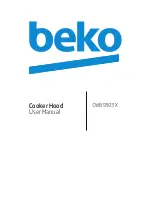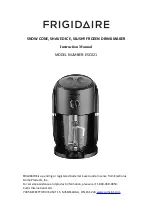
8
Instruction Manual
JLCHC901
90cm Cooker hood
Installation
The cooker hood must be mounted so that the minimum distance between
the filters and the gas or electric hob is 65cm.
The ducting system for this cooker hood must not be connected to an
existing ventilation system which is being used for any other purpose.
The exhaust for the cooker hood can be set up as either:
– filtering/recirculation (A). Air and fumes collected by the cooker hood
are cleaned by aluminium and charcoal filters* and vented through a
hole in the top of the cabinet.
– exhaust extraction (B). Air and fumes collected by the cooker hood are
vented to the outside air through an evauation duct in the wall or ceiling
of the room. Charcoal filters are not required for this set up.
* This cooker hood is not supplied with charcoal filters. Charcoal filters
(model number JLCHF08) can be obtained from www.johnlewis.com.
We recommend an air exhaust tube which is the same diameter as the air
exhaust outlet hole. If a two-part air exhaust tube is used, the upper part
must be placed oustide the lower part.
Make sure that the air exhaust tube does not exceed 5 metres. Limit the
number of elbows (bends) in the pipe and avoid abrupt direction changes.
If installing this cooker hood between adjoining wall cabinets, the wall
cabinets must not overhang the hob.
Before beginning installation, remove the filters (see page 7). This will make
the unit easier to handle during installation.
Installing the cooker hood
1. Drill holes for the wall brackets, using the drilling template (C) to mark
where the holes should be.
2. Use the supplied anchors and screws to attach the wall brackets to the
wall.
3. Hook the cooker hood on to the wall brackets (D).
4. Tighten the screws on the wall brackets (E) to anchor the cooker hood
to the wall.
A
B
C
D
E
































